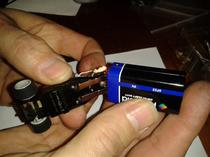
PT - Car Servicing
I offer a car servicing service @ £7 per car.(Plus parts and return postage costs, Includes small body repairs, fitting of new tyres, windows, pinions and pickups/springs (Plus Part costs).
Buy cars from me and everything will be cleaned tested and renewed as necessary on the cars for just £6 extra per car.
Cars and track pieces are relatively simple to service. I have put together a short video guide for car Servicing.......I will add track etc servicing and set servicing too...in due course.
Cars - DIY guide and intro video below
In above video clip, its important that the motor is put back into the chassis the correct way round otherwise the direction of travel will be incorrect. As you look at the chassis with motor in place (upright as if car fully assembled) the Word 'JOHNSON' on the upper edge of the motor needs to read upright. On Race and Chase cars like this police car and the stingray, this does not matter as the controller top button reverses direction anyway.
Very early US Speedtrack Cars have the early 'whisker motor', these can run very smooth. The chassis's and motors are not simply interchangeable with the later type and more reliable brushed Johnson motors.
The 'whisker' motor is named such as the contact for the power onto the commutator is made by a spring and straight one piece wire that makes contact with each side of the commutator.
The later US and all the UK 6v cars have the brushed 'Johnson' Motor. It has two brushes that make contact with the commutator, the brushes can be changed after many miles / years of driving. If you look from above at the commutator shaft you can see the brushes on each side, if the brushes are heavily worn the commutator will spark.
The round washer looking caps on each side of the motor frame as shown in the picture can be removed and under are the tiny springs and brushes.
In my experience although I do have bags of brushes and the caps as spares they dont tend to ever be changed but they are a point of failure if you have a good or even new motor that does not work. Easiest is to change the motor.
CARS - The most important thing on car servicing is taking CARE not to damage the chassis or the body.
To the left is a typical car service kit
- Tools needed for cars: PP3 9v battery, small pillips screwdriver, small flat screwdriver, cloth, long nose pliers
- Materials needed for cars: soap and water, cotton buds, 3in1 oil,
- Table with spotlamp, I also use a cork lined clamp and stand (optional as it can be done without quite easily)
- Spares handy to have, silicon tyres, pinion gear (pinion), pickups and springs, lamps, can motors, rear and front axles with gear. (springs and brushes rarely changed but can be)
- Service Kits available from my sales section
- Typical failure points are:
1. Rear axle Crown gear splitting cracking..,symptom is car stops at low speeds
2. Pinion cracking...symptom car stops at low speeds similar to rear axle symptom
3. Perished rubber tyres...symptom spinning wheels no traction
4. Lamp failure
5. Heavily worn pickups...symptom cars fail to make a good contact with the track rails.
6. Chassis breaking at several places;
Mounting points, at rear lugs snap.
Crack from slot pin to screw mount through the plastic
Lugs break at spring housing/headlamp connectors.(this is very common esp with old plastic)
Broken lamp tabs
This is a collection of spares and servicing materials, of course there is a Matchbox Powertrack servicing toolkit made for the shops that carried out car servicing. I would add a pair of tweasers or long nose pliers too.
Picture below is of the original toolkit only supplied to resellers of the powertrack product.
Track
TRACK 1st Remove power cable from terminal track!
- Damp cloth, Matchbox track cleaner/scraper (see picture).
This is the track cleaner, every set should have been shipped with one of these. With the track un-powered, this can be used to scrape along the track at 45 degrees to give the track lines a clean. Its very good however it can lead to greater pickup wear as the track lines can be sharp. So the cars will need a v.light oiling (I use a 3in1 light oil, although thinner oils may be better) of the pickups to prevent wear to the pickups as the cars race around the track.
- Track in need of a good renovation and clean there is a product I recommend (SlotzPartz) Track Cleaner, and it is available from the track and spares sections under sales.
- Dont forget to also clean the joins (where the track pieces meet)
Its quite common for track that has not been used for a while to corrode at the joint end, a small piece of fine grade emery paper can be used stuck to a matchstick or narrow piece of wood/plastic to rub on the metal that joins with the next track. Nothing worse than a car stopping at the next piece of track!
- Check each track join before running the cars
It sometimes can happen that the track join metal sections raise a little, this can cause the car to hit them and jump and also causes wear to the contacts that does eventually lead to a hole in the pickups. So before running check each join, if there are any raised sections, then these can be careful pressed down, using the track cleaner.
- In between race sessions
After some experimentation and a few shows, the use of a pair of braided micro-scalextric cars serve very well as light track rails cleaners as the braid scours the track rails. 12v cars run very well on a Powertrack 6v layout.







